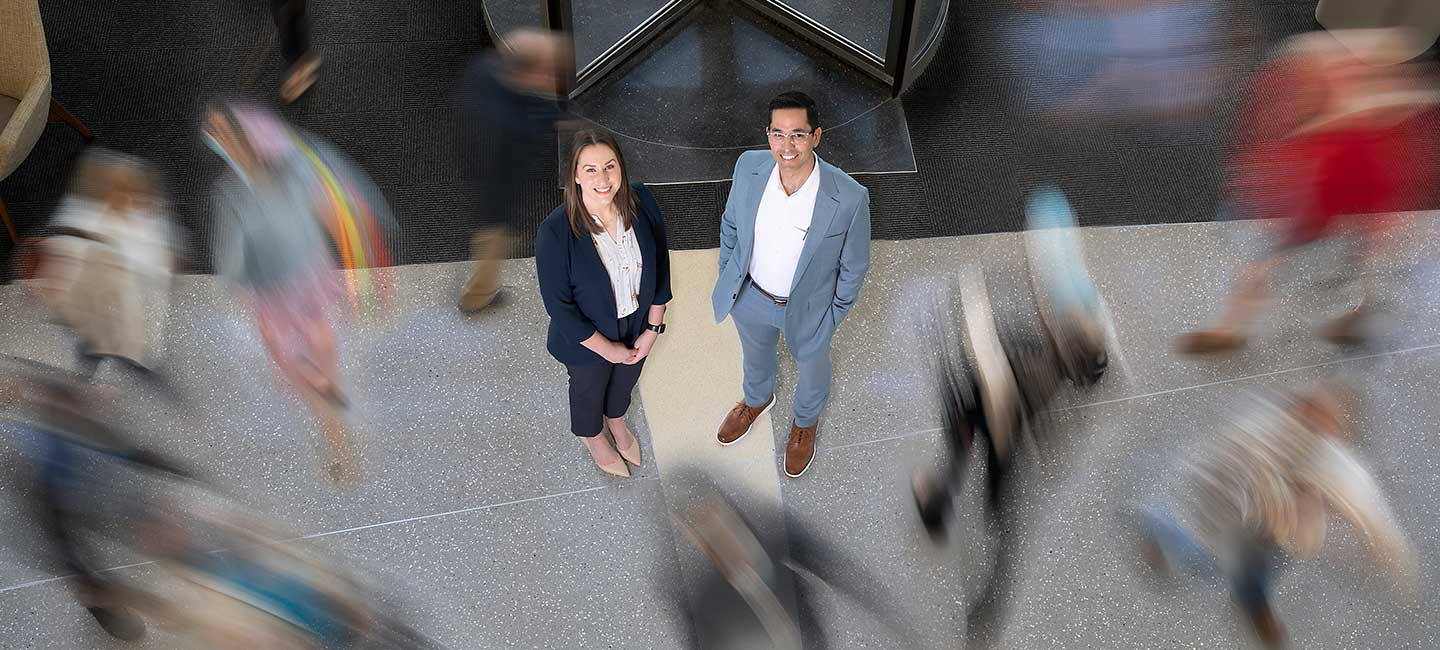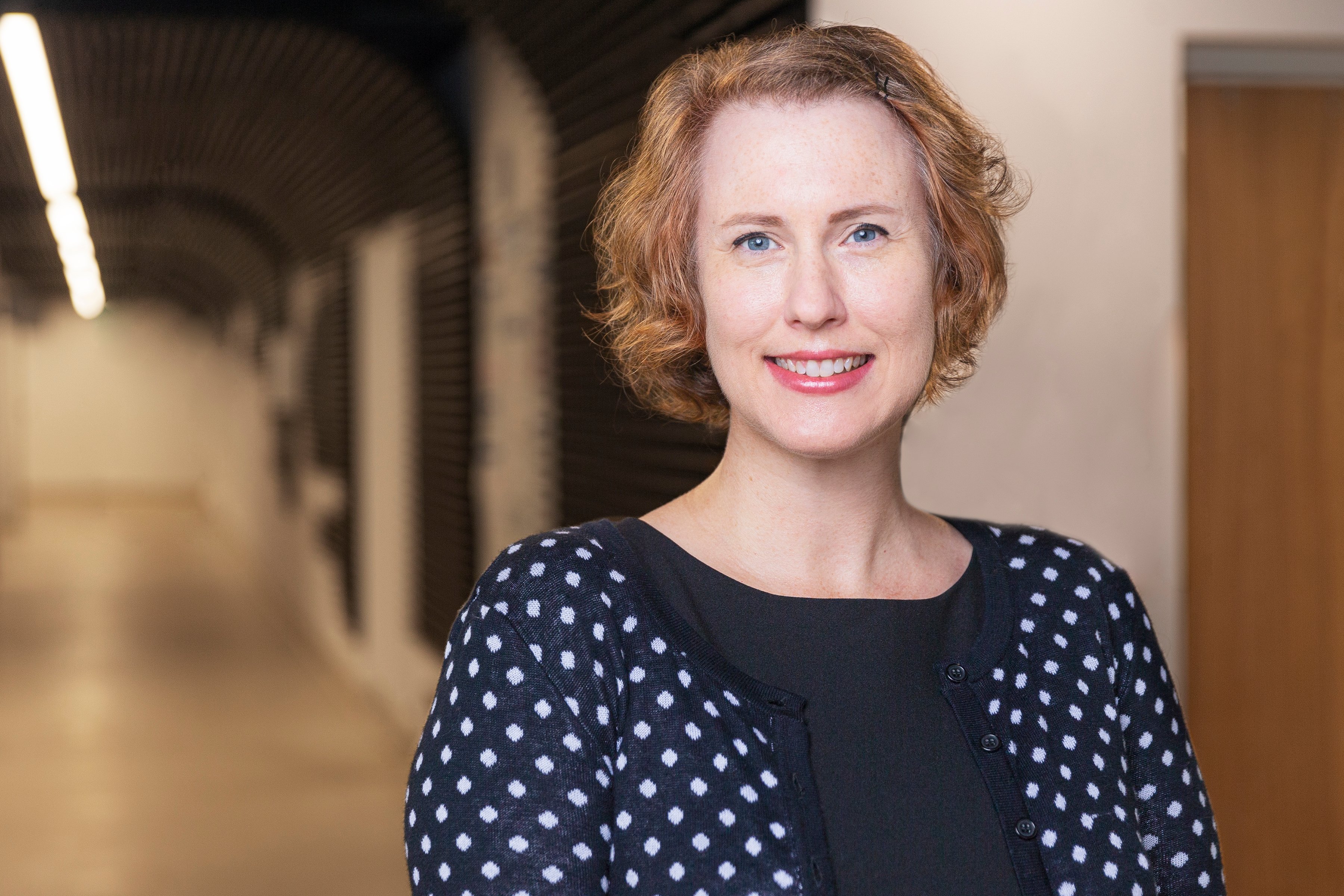Mobile Monitoring: Making Cancer Care More Accessible
From Federico Tienzo’s home in Forest City, it’s a 98.6-mile drive to Tampa. That’s two hours on I-4 — on a good day. Once he arrives at Moffitt Cancer Center’s Magnolia campus, there’s the line for parking at the valet. Then 109 steps to the elevator and one floor up to the pre-anesthesia testing clinic. Five minutes at the check-in desk and 10 minutes in the waiting room. Once he’s with the nurse practitioner, a few seconds of listening to his heart with a stethoscope would show 93 beats per minute. Then one electrocardiogram tracing to evaluate his heart. Conclusion: Zero murmurs or abnormalities. Tienzo is cleared for his prostatectomy. So it’s back to the elevator, down one floor, 64 steps to the valet pickup and two hours home on I-4. In the end, it seems like one more day hijacked by cancer.
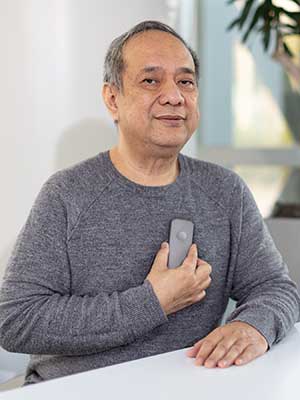
Federico Tienzo was able to complete his pre-anesthesia evaluation appointment via Zoom with monitoring from a remote stethoscope. The visit was part of a clinical trial exploring how Moffitt can make these visits more convenient for patients.
But that’s not what happened on this particular Wednesday. Instead, Tienzo left his home in Forest City, a small community 12 miles north of Orlando, and went to work like normal. When it was time for his pre-anesthesia evaluation appointment at Moffitt, he took a short break from his job in architectural design and logged onto Zoom. He got out a small digital stethoscope and held it to his chest like he’d been shown. He could see his heart rate and the electrocardiogram (EKG) tracing on an app on his phone. The nurse practitioner back at Moffitt could also see them. She listened to his heart and lungs and noted his heart rate. In 15 minutes, he was cleared for prostate cancer surgery and back at work.
“It was so easy. I didn’t even need to tell my employer that I had an appointment,” he said.
Tienzo’s telehealth appointment using the remote stethoscope was part of a clinical trial being led by anesthesiologist Nasrin Aldawoodi, M.D., medical director of Moffitt’s pre-anesthesia testing clinic. It also represents the next generation of telehealth initiatives being pioneered at Moffitt. Beyond virtual visits, remote monitoring devices offer more opportunities to reduce the burden on patients, minimize health disparities and improve outcomes during treatment.
“At Moffitt, most of our patients aren’t coming from down the street,” Aldawoodi explained. “As a specialty cancer center, we do some really unique surgeries. And patients are coming from the Panhandle, from South Florida. They are driving for hours. So this level of virtual care is uniquely useful.”
Bridging the Gap Between Virtual and In-Person Visits
Moffitt has been offering virtual visits for certain patients since before the pandemic. The cancer center began offering telemedicine visits in the pre-anesthesia testing (PAT) clinic in 2020. During COVID-19, those efforts significantly ramped up. There is even specific space set aside in the PAT clinic now for providers to meet with patients via Zoom. More than 1 in 5 perioperative patients are seen via telemedicine.
Moffitt continues to expand its telehealth efforts to cover the full spectrum of care. Virtual visits are also being delivered for chemotherapy education, presurgical education, post-surgical appointments and evaluation, and allied health services such as dietitians. In addition, to ensure there is equitable access, interpreters are available for non-English language proficiency patients.

Of course, as convenient as telehealth visits are for patients, there are limitations as to what health care providers can evaluate through a Zoom call. Devices such as the remote stethoscope offer opportunities to bridge the gap between what can be done in a telehealth visit versus an in-person appointment.
As part of Aldawoodi’s randomized telehealth trial, she is working with surgeons Julio Pow-Sang, M.D., chair of the Genitourinary Oncology Department, and Mitchel Hoffman, M.D., vice chair of the Gynecologic Oncology Department, to enroll patients who are scheduled for surgeries to remove the prostate and uterus. Patients get a lesson on how to use the Eko Duo digital stethoscope from the Moffitt Virtual Care team. Then they take the device home along with an iPod Touch that is preloaded with Zoom and the stethoscope app.
Rather than returning to Moffitt for an in-person pre-anesthesia evaluation ahead of their surgery, the patients log in for a telehealth visit via Zoom and use the digital stethoscope. From hundreds of miles away, a Moffitt anesthesiologist and nurse practitioner can monitor the patients’ heart rate, review EKG tracings, and listen for abnormalities and irregularities such as atrial fibrillation, which can lead to clots in the heart, or murmurs that indicate a valve disorder. These problems can prompt surgery delays and cancellations.
The pre-anesthesia evaluations are typically short appointments, but they’re crucial. Some patients drive for hours to get to them. The opportunity to conduct the appointments remotely removes one more burden that patients face as they head into surgery.
“Our patients come from far away. They have a lot of appointments,” Aldawoodi said. “Cancer treatment in general is like a full-time job.”
Addressing the Blind Spot Between Appointments
That full-time job continues for patients post-surgery and during ongoing treatment such as chemotherapy, radiation and immunotherapy. Patients receive detailed instructions on what to expect related to their treatment. They learn about side effects and potential physical limitations. Day in and day out, patients and caregivers are acutely aware of how their cancer and treatment are affecting them. But for their health care team, that time from one appointment to the next is often a blind spot.
Patients are sometimes hesitant to alert their oncologist to potential problems between appointments, explained Brian D. Gonzalez, Ph.D., a clinical psychologist in Moffitt’s Department of Health Outcomes and Behavior. Patients may assume, for example, that their nausea level is normal, so they don’t call the doctor. Or they think the doctor is busy and they just don’t want to bother them. Or, if the patient is participating in a clinical trial, they may worry that “complaining” will lead to them being removed from the trial.
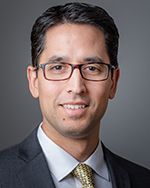
Brian D. Gonzalez, Ph.D., Department of Health Outcomes and Behavior
“Of course, that’s not how it would work. The oncologists and nurses want to know about your side effects so that they can help you,” Gonzalez said. “But many patients don’t realize that.”
Gonzalez and Laura B. Oswald, Ph.D., another clinical psychologist in Health Outcomes and Behavior, have been working with Moffitt oncologists to develop mobile health initiatives that could capture data from patients between appointments and reduce those blind spots. They do this by pairing wearable devices such as Fitbit and Garmin watches with remote patient-reported outcome surveys. The wearable devices capture data like heart rate, sleep and physical activity each day. The surveys collect information on symptoms, possible side effects and how patients are feeling. The goal is to identify patterns of data or changes in reported outcomes that could predict when a patient is about to experience problems, enabling the health care team to intervene and prevent the need for an emergency room visit or hospitalization.
Oswald and Kedar Kirtane, M.D., medical director for solid tumor cellular immunotherapy, recently co-led a pilot study involving 15 patients who were being treated with adoptive cell therapies such as chimeric antigen receptor T-cell (CAR T) therapy. The patients started wearing Fitbits before their treatment began and continued wearing them for 90 days post-therapy. They also completed 14 electronic surveys during this time — daily for the first week after therapy and then less frequently.
“We tried to make it as remote as possible, so patients could go about what they were already doing and give data at the same time,” Oswald said of the study, which was published in the journal Cancers. “And although we only recruited 15 patients, the amount of data that we got from the patients was extensive.”
Gonzalez worked on a similar study led by Scott Gilbert, M.D., a surgeon in Genitourinary Oncology, tracking data from a group of 15 patients with bladder cancer who had their bladders removed. The study, published in The Journal of Urology, used Garmin watches to track biometric data and collected daily surveys via a smartphone app for 30 days post-discharge.
Krupal Patel, M.D., a surgeon in Moffitt’s Head and Neck Oncology Department, also worked with Gonzalez on a pilot study of 12 patients with head and neck cancers who were undergoing chemotherapy with or without radiation. The patients wore Garmin watches for six weeks during treatment and four weeks after treatment. They also completed symptom surveys electronically every other day while on active treatment and once a week after completing treatment.
Results from all three studies showed that this type of remote monitoring is feasible, and patients are comfortable using the remote surveys to report how they’re feeling. The next step is to conduct more expansive studies involving larger groups of patients and to determine whether the data could reliably predict patient outcomes.
“If we can do this on a larger scale, we may be able to look for patterns of behavior or physical activity changes before a clinical event,” Oswald explained. “For example, it might be that the patients tell us that something’s different. Maybe they’re reporting a big increase in fatigue right before some clinical event happens. Or it might not even be something they’re telling us. It might be something that they’re behaviorally changing, such as just resting more a couple of days before the onset of severe toxicity.”
Reducing the Burden on Patients
Advances in virtual care have the potential to save patients time and money. A study led by Patel evaluated the impact of 25,496 telehealth visits with 11,688 patients from April 1, 2020, to June 30, 2021. It found that patients saved $147 to $186 per telehealth visit, taking into account the cost of travel and the potential loss of income from missing work. That includes 148.6 roundtrip travel miles and 2.9 hours of roundtrip driving time. The patients also saved 1.2 hours per telehealth visit, compared with in-clinic visits.
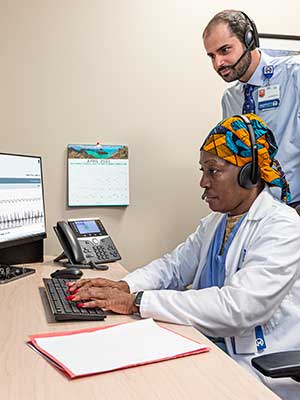
Anesthesiologist Robert Ackerman, M.D., and nurse practitioner Christine Ellis are able to monitor patients’ vitals remotely with the digital stethoscope. Virtual visits like these save patients both time and money.
Aldawoodi’s work with the remote stethoscope could open up more opportunities for visits to be done virtually. And that is extremely important as Moffitt’s cutting-edge treatment options draw patients from across the state, as well as nationally and internationally.
“There’s the fact that geography could limit somebody’s access to care for cancer, and there are socioeconomic factors that come into play,” Aldawoodi said. “Some patients can’t take time off of work. Some patients are caregivers themselves, to children or elderly relatives. They can’t afford childcare or they don’t have transportation. They might not even have support for someone to be with them on the day of surgery. We need to do whatever we can to eliminate those disparities.”
In between visits, remote monitoring through wearable devices and patient surveys also has the potential to ultimately improve quality of life for patients. This could be as simple as tracking reported nausea levels and automatically alerting the care team when a patient may need a change in medication. It could also be as major as prompting intervention that saves a patient from a scary and expensive emergency room visit.
“Patients who come to Moffitt are already getting world-class care,” Gonzalez said. “They’re getting monitored. They’re getting checked in on. There’s the opportunity for virtual visits. This would not only improve the fantastic care patients receive, but it would expand access to patients who might not be able to come to Moffitt. People who live farther away might be able to come to get treated here and get monitored remotely.”
Looking to the Future of Virtual Care
The research into remote monitoring through wearable devices and patient surveys is in the early stages. Gonzalez led a larger study working with Eric Haura, M.D., associate center director for Clinical Science, and Andreas Saltos, M.D., clinical research medical director in the Thoracic Oncology Department. The study collected data from 60 patients with non-small cell lung cancer who were undergoing systemic treatments such as chemotherapy or immunotherapy. The patients wore Fitbits and completed surveys remotely for 60 days after beginning systemic therapy. The team is now working to find correlations between the data and how the patients responded to treatment.
Oswald and Kirtane have expanded their research, as well, pooling data from four observational studies at Moffitt that collected common patient-reported outcomes among 208 patients treated with CAR T therapy. An analysis by Moffitt’s Machine Learning Department showed preliminary associations between the patient-reported outcomes and the patients’ response to CAR T therapy, with up to 83% predictive performance.
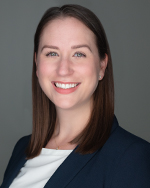
As the research expands into exponentially larger sample sizes, the doctors envision a future where patients could be easily monitored remotely during treatment, with their health care teams alerted whenever the data points to a potential problem on the horizon. This level of virtual care could be a game-changer for improving outcomes.
“We’re talking minute-to-minute, second-to-second data that would just not be feasible to collect in other ways, unless you’re literally just following a patient around all day,” Oswald said.
For Aldawoodi, the future of telehealth has already started to hit home with the amount of off-the-shelf digital monitoring devices that are available. She points out that many patients became more comfortable with technology and telehealth during the pandemic, laying the groundwork to do more appointments remotely.
“A lot of patients already have a blood pressure cuff. A lot of patients bought pulse oximeters because of COVID. So they can capture a lot of vitals remotely. They have these smart watches that can capture their heart rate. And now this remote stethoscope is that additional step where we can listen to their heart and lung sounds,” she said.
All of this translates to easier access to cancer care.
“This really does remove those high barriers that a lot of patients have to getting care,” Aldawoodi said. “If we can almost replicate the in-clinic experience with a remote experience — and I think we can and the technology is making that possible — then it’s a win-win for the patients, for Moffitt and for health care in general.”
This article originally appeared in Moffitt's Momentum magazine.


